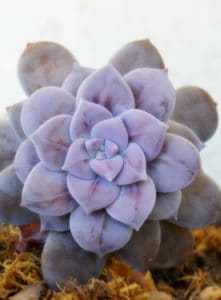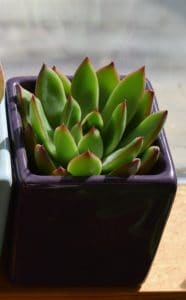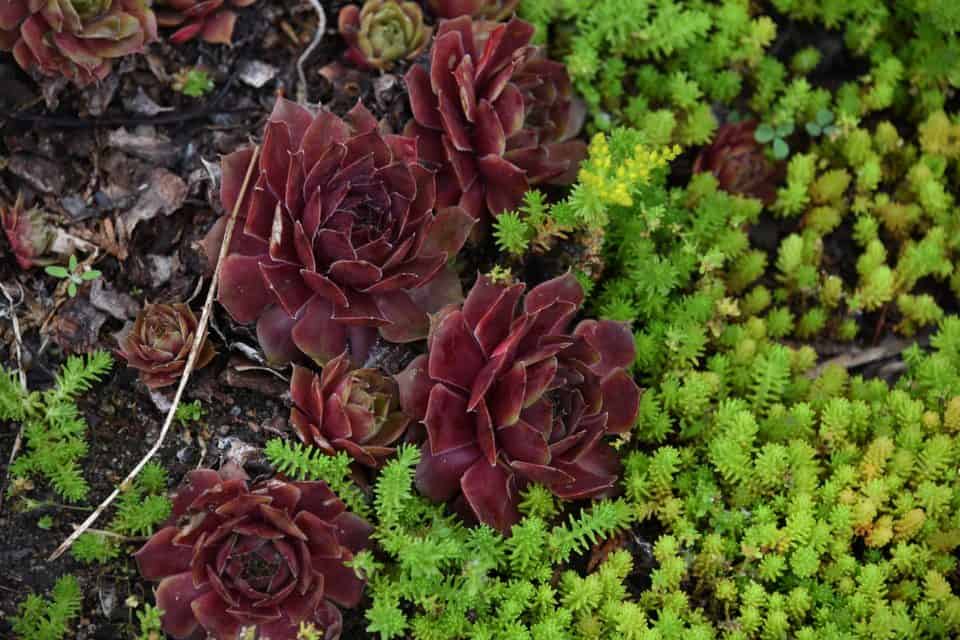Some links in the post are affiliate links and I get a commission from purchases made through some links found in the post.
Taking care of succulents might seem like the easiest gardening job. After all, these plants are so self-sufficient that they store water in preparation for the harsh climate.
No wonder it’s hard to kill a cactus, and those who manage to do so often earn a crown. As much as these plants are easy to care for, you may encounter some challenges down the road.
One of these is the purpling of the plant, which can leave you frustrated and confused. Are you in this boat?
Not to worry- we have put together a list of possible causes of the purpling and what you can do about it. By the end of this guide, you should know what you need to do to avoid killing your succulent (yikes!).
Why is my Succulent Turning Purple?
Are you curious why your succulent suddenly looks sickly and purplish? We go through the reasons why your succulent may be turning purple and see if any stands out to you:
Natural Process
Sometimes, we forget that some plants will not live forever, and they will start showing signs of aging at some point. That could be the case with your succulent.
You see, as much as most succulents are green, they have underlying notes too. They can have some shades of purple, blue, red, or other hues that show more as they age.
Too Much Heat or Light Exposure
 Succulents often fair well in the sun. After all, most of them have adaptations to help them thrive in hot and dry climates. But that’s not to say that you should leave them exposed to the sun all day.
Succulents often fair well in the sun. After all, most of them have adaptations to help them thrive in hot and dry climates. But that’s not to say that you should leave them exposed to the sun all day.
Doing so can expose them to high temperatures, which can damage their plant cells.
The damage exhibits in many ways, including color changes (e.g., purpling, reddening, and bluing).
Please note that damaged plant cells cannot make food for the plant, reducing its chances of survival.
But how can you know that heat or light is to blame for the color changes? Easy! You inspect the plant and check whether the damage lies on the sun or heat-facing side of the plant.
You may also like: 3 quick ways to propagate a Christmas cactus
Sudden Changes in Growing Conditions
Succulents are highly sensitive to their environments, and once they get used to certain conditions, they don’t take too well to changes.
If anything, they could go into shock and die. So, which factors are the most likely culprits for the purpling? – Changes in heat and lighting.
Think back to your plant’s environment- have you changed anything lately? It could be that you changed its position in the room or moved it to another part of the house.
Is it receiving more light than before? Have the temperatures dropped? These changes can trigger discoloration and purpling.
Underwatering
What comes to your mind when you hear that your succulent can store water?
To many people, this is the green light to water the plant infrequently, knowing that it has what it takes to survive prolonged periods without water.
But you might be taking the infrequent watering a bit too far, hence the purpling. To check if your plant needs water, inspect the soil.
Dig a finger into the ground and feel the earth. Is it dry? That’s not a good sign. Also, check the plant. Do its leaves appear curled? Again, that’s a cry for help.
If you need help watering your plant, try using this automatic drip irrigation kit.
Lack of Nutrition
You may be doing everything right, yet your plant does not seem to be thriving, and you may wonder where you might have gone wrong.
When was the last time you repotted your plant? That could be the problem. You see, water, lighting, and heat will not do much good if the plant does not have enough nutrients.
How to Stop my Succulent from Turning Purple
To stop your succulent from turning purple we have a few reasons below which we hope can help you get to the bottom of it:
Natural Process
Before planting a succulent, we advise that you understand its optimal growing conditions so you can provide it with the best environment.
Even so, you cannot prevent natural processes like aging as the plant develops. So, if you notice some color changes, refer to a guide about your specific succulent.
Is it normal for it to change color? If yes, you have found your solution. If not, you need to dig deeper into other possible reasons and solutions, as shown below.
Too Much Heat or Light Exposure
Every succulent will thrive in specific conditions. So, to protect your plant and give it a great chance to thrive, you should adhere to its optimal conditions.
From a general point of view, though, a succulent should do well with at least six hours of bright indirect sunlight each day.
Of course, to be sure, you should always refer to a specific guide and supplement the light or cut back as needed.
If your plant is struggling due to light, trying using this to help regulate the lighting.
Sudden Changes in Growing Conditions

Knowing that succulents are easily affected by environmental changes is an excellent place to start. You should always coax them into a new environment by making slight changes to the conditions.
For example, if you bring a plant from the outside to the inside where the temperatures are colder, shade it. After a while, you can take off the shade and allow it to get used to the new environment.
Otherwise, you will set it up for failure, expecting it to acclimate immediately. The same goes for lighting. Suppose a plant gets at least seven hours of light per day.
You can’t move it to a spot that receives only four hours a day and expect it to thrive.
Instead, you must supplement the difference in hours in some way, including the use of fluorescent lighting. The fewer the changes in your plant’s life, the less likely it is to change its hue.
Underwatering
While growing a succulent gives you leeway on how often you should water the plant, you should not completely ignore it.
So, how do you balance between underwatering and overwatering the succulent?
By watering the plant regularly, based on factors such as lighting, temperature, and plant size. Always allow the soil to dry between watering before soaking it again.
That should give the plant enough water to absorb minerals and store enough for when the weather becomes harsh.
Keep in mind that you should reduce the watering during winter when the plant goes dormant. Do not stop watering it but instead, reduce the amount.
Lack of Nutrition
Your plant may need nutrition for two reasons- it has outgrown its pot, or the soil composition is poor. Let’s start with the first one- when was the last time you repotted your plant?
Like other plants, succulents will eventually outgrow their pots if you plant them in the recommended containers. You notice changes in the plant, including purpling and leaf shriveling.
Once you see such changes, it’s time to inspect the roots and check if they are packed. Always repot your plant when it is rootbound to enable it to soak up nutrients.
The other possible solution is to feed the soil with fertilizer during its active growing season. Using a combination of potassium, phosphorus and nitrogen should work the magic.
Please note that you should not fertilize the soil during dormant phases. Try this easy to use fertilizer to give your plant that little boost.
Final Thoughts
There you have it! – a quick guide on assessing the possible causes of purpling in succulents and how you can solve them in a few easy steps. Happy gardening!
If you enjoyed this article, check out our article on why does my aloe plant have no roots.


